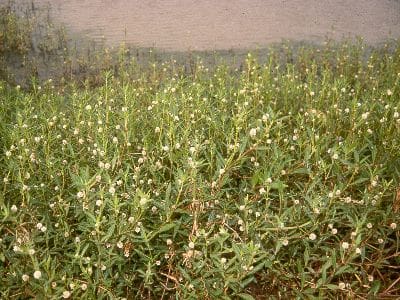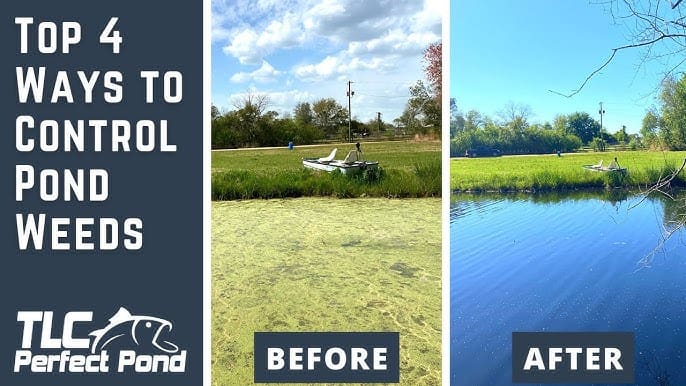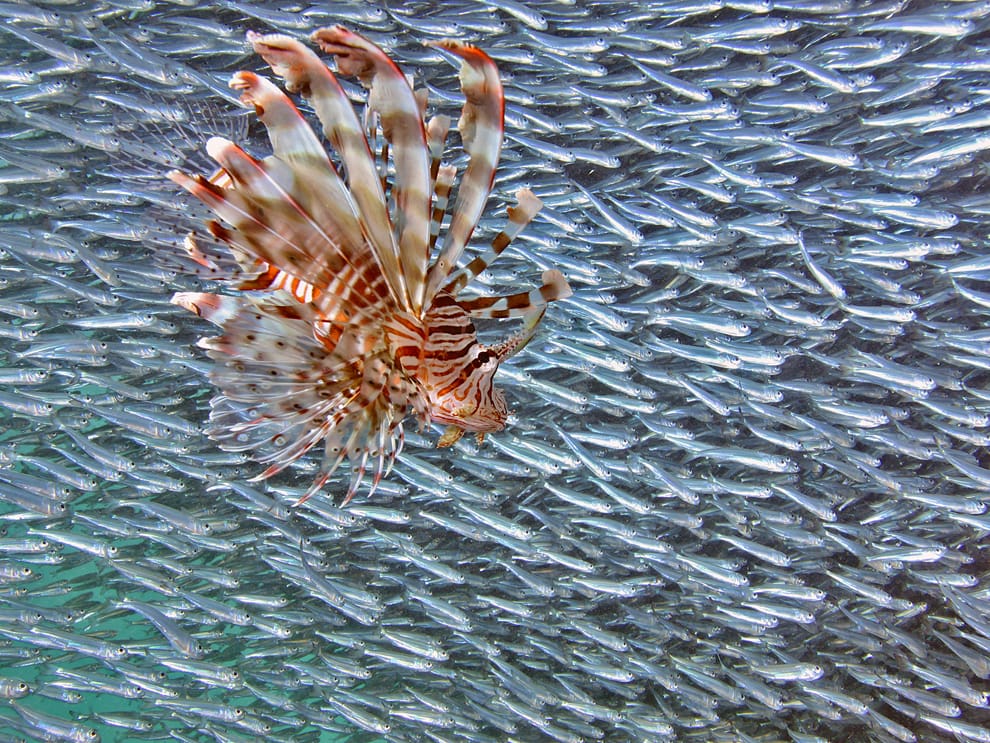Welcome to “Top 10 Ways To Effectively Control Alligator Weed,” where you’ll discover practical and useful methods to manage this aggressive plant. This guide is designed to help you tackle alligator weed head-on, from identifying it in your yard to using the best techniques to keep it under control. With these top 10 tips, you will learn how to protect your garden and water systems from the invasive spread of alligator weed, ensuring a healthier and more manageable environment.
Top 10 Ways to Effectively Control Alligator Weed
Have you ever noticed thick mats of green invading your garden or waterway? Chances are, you’re dealing with Alligator Weed. This tenacious intruder can be a gardener’s bane or a farmer’s nightmare. But don’t worry, I’m here to guide you through the top 10 ways to effectively control Alligator Weed.
What is Alligator Weed?
Alligator weed (Alternanthera philoxeroides) is an aquatic and terrestrial weed that’s notorious for its resilience. Originally from South America, it has made itself at home in the warm and humid regions of many parts of the world. Its ability to grow both on land and in water makes it a particularly stubborn challenge for landowners and farmers.

Why is Controlling Alligator Weed Important?
Before diving into the methods, let’s understand why controlling Alligator Weed is essential. This weed isn’t just unsightly; it can cause substantial problems:
- Environmental Impact: It can degrade native plant habitats by outcompeting local flora.
- Agricultural Concerns: It can invade crops, reducing yields and increasing management costs.
- Waterways: It can impede water flow in irrigation channels and waterways, exacerbating flooding.
Top 10 Ways to Effectively Control Alligator Weed
1. Manual Removal
Pros and Cons of Manual Removal
Pros:
- Immediate results.
- No chemicals involved, making it eco-friendly.
- Suitable for small infestations.
Cons:
- Labor-intensive.
- Not effective for large infestations.
Manual removal is probably the most straightforward method you might think of. Pulling weeds by hand or using hand tools can be effective for small infestations. Ensure to remove all parts of the plant, including roots and runners, to prevent regrowth.
2. Mechanical Control
If your Alligator Weed problem is a bit more extensive, mechanical control could be your go-to solution. This technique involves using machinery to cut, dredge, or mow the weed.
Mechanical Control Methods
| Method | Description |
|---|---|
| Mowing | Cutting weeds to ground level. |
| Dredging | Removing weeds from water bodies. |
| Bulldozing | Clearing heavily infested areas. |
Mechanical control can be pretty effective, but it’s usually more suitable for large-scale infestations. Keep in mind that it might require hiring heavy machinery, which could be costly.
3. Flooding
Flooding an area can starve Alligator Weed of oxygen, making this an efficient control method, especially for land-based infestations.
Effective Flooding Techniques
- Maintain Water Depth: Ensure the water covers the weed for at least 6 weeks.
- Monitor Water Levels: Periodically check to ensure full submersion.
Pros:
- Highly effective.
- Can cover large areas.
Cons:
- Requires extensive water management.
- Not feasible in all landscapes.
4. Smothering
Smothering involves covering the weed with materials that block sunlight and air. This method is usually employed for soil or land-based infestations.
Ideal Smothering Materials
| Material | Durability | Ease of Application |
|---|---|---|
| Black Plastic | High | Easy |
| Cardboard | Medium | Moderate |
| Wood Chips/Mulch | Medium-high | Easy |
By depriving Alligator Weed of light, you make it difficult for the plant to photosynthesize, eventually killing it.
5. Chemical Control
Chemical control can be a highly effective way to manage Alligator Weed, especially in severe infestations. However, it’s essential to choose the right herbicide and apply it correctly.
Types of Herbicides
| Herbicide | Targeted Use | Effectiveness |
|---|---|---|
| Glyphosate | General weed killer | High |
| 2,4-D | Selective weed killer | Moderate-High |
| Triclopyr | Woody plant killer | High |
Tips for Chemical Application
- Read the Label: Follow the manufacturer’s instructions to avoid harming non-target species.
- Optimal Timing: Apply herbicides during active growth periods for best results.
- Safety First: Wear proper protective gear and consider environmental impacts.
6. Biological Control
One of the fascinating ways to control Alligator Weed is through biological means. Certain insects and pathogens naturally feed on Alligator Weed, thereby providing a natural method of control.
Examples of Biological Agents
| Agent | Target Area | Effectiveness |
|---|---|---|
| Agasicles hygrophila | Water bodies | High |
| Vogtia malloi | Terrestrial | Moderate-High |
Introducing these biological agents can be a long-term solution, and it’s generally eco-friendly. However, it may take time for noticeable results.
7. Integrated Pest Management (IPM)
Integrated Pest Management (IPM) combines multiple control methods into a cohesive management strategy. This approach maximizes effectiveness while minimizing environmental impact.
Steps in IPM
- Assessment: Identify the infestation’s extent.
- Planning: Choose appropriate control methods.
- Implementation: Execute the plan effectively.
- Monitoring: Regularly check progress and make adjustments.
Pros:
- Holistic approach.
- Reduces dependency on any single method.
Cons:
- Requires careful planning and monitoring.
- May be resource-intensive.
8. Water Level Manipulation
Water level manipulation is another effective strategy for controlling aquatic Alligator Weed. By adjusting water levels, you can create conditions unfavorable for growth.
Techniques for Water Level Manipulation
| Method | Description |
|---|---|
| Raising Levels | Flooding to submerge weeds. |
| Lowering Levels | Draining to expose weeds to drying. |
This method may be challenging to implement in natural water bodies but could be practical in managed environments like ponds and irrigation channels.
9. Solarization
Solarization uses the sun’s heat to kill Alligator Weed. By covering the infested area with clear plastic, sunlight is trapped, raising soil temperatures to levels lethal to the weed.
Steps for Effective Solarization
- Prepare the Area: Clear debris and water the soil.
- Cover with Clear Plastic: Secure edges to ensure no heat escapes.
- Leave in Place: Keep the plastic in place for 4-6 weeks.
Pros:
- Chemical-free.
- Effective for soil-borne infestations.
Cons:
- Time-consuming.
- Limited to sunny periods.
10. Preventative Measures
Prevention is always better than cure. Implementing preventative measures can save you the hassle of dealing with Alligator Weed in the first place.
Preventative Strategies
- Monitor Water Bodies: Regularly inspect for early signs of infestation.
- Restrict Movement: Avoid transferring contaminated watercraft or equipment.
- Educate Others: Raise awareness among neighbors and community members.
By being proactive, you can reduce the likelihood of facing a severe Alligator Weed problem in the future.

Combining Methods for Better Results
While each of these methods can be effective on its own, combining them often yields the best results. For instance, you might start with mechanical removal followed by herbicide application and then introduce biological controls to manage any regrowth. The key is to tailor your approach based on the specific conditions and scale of your infestation.
Safety and Environmental Considerations
When dealing with Alligator Weed, always consider the safety of your actions—both for yourself and the environment. Chemical methods should be used judiciously to avoid harming non-target species or contaminating water supplies. Similarly, mechanical and manual removal should be done with due care to avoid soil erosion or disrupting local ecosystems.
Safety Tips
- Wear Protective Gear: Always use gloves, goggles, and masks when necessary.
- Dispose of Debris Properly: Ensure removed weeds are disposed of in a manner that prevents regrowth.
- Consult Experts: When in doubt, consult agricultural or environmental experts for advice.
Environmental Considerations
- Minimize Chemical Use: Opt for eco-friendly or organic options whenever possible.
- Protect Native Species: Employ methods that target Alligator Weed without harming native flora and fauna.
- Restore Native Vegetation: After removing Alligator Weed, consider planting native species to restore ecological balance.

Conclusion
Dealing with Alligator Weed can be challenging, but it’s far from impossible. By understanding the nature of this weed and employing a combination of manual, mechanical, chemical, and biological control methods, you can effectively manage and eradicate this invasive species. Whether you’re a gardener, farmer, or land manager, these top 10 ways to control Alligator Weed offer a comprehensive toolkit for tackling this persistent pest.
Remember, persistence and vigilance are your best allies. Stay proactive, monitor your progress, and be ready to adapt your strategies as needed. With the right approach, you can keep your space Alligator Weed-free and enjoy a healthier, more productive environment. Good luck, and happy weed-controlling!


